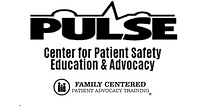DON’T HANG UP
- ilene Corina

- Sep 23, 2021
- 3 min read
Updated: Jul 18, 2025

Don’t Hang Up!
When you are lying in the hospital bed, get a call from a family member or friend and are chatting away, and a doctor or nurse walks in, your first reaction is probably to say, “I have to go, the doctor is here.”
Instead, it should be, “The doctor is here: I’m putting you on speaker – start taking notes.”
As a professional patient advocate for the past 15 years, with 25 years involved in patient safety, the last thing I want is to be cut off by the conversation between patient and doctor. Of course, I never assume the patient wants me involved, but let’s plan ahead – now.
It may seem polite to hang up when the doctor comes in, but that is also the most crucial time to have an advocate with you. Whether I am on call with someone I know well or someone I am checking on for their family, I can be useful to the patient as long as I’m prepared.

Whether you are a professional patient advocate, family member or friend, when calling a patient already hospitalized, have that paper and pen ready to take notes; write down questions for the doctor or nurse as you are having a conversation with the patient. Then, when the nurse or doctor comes into the room, be ready with that list.
Conversations with a patient may be something like:
“I don’t know when I’m going home.” (Write it down: patient wants to know when she’s going home).
“I think I’m going to get physical therapy.” (Write it down: is the patient getting PT?)
“I have diabetes but every meal includes a piece of cake.” (Write it down: patient has diabetes but keeps getting cake. What else can they get?)
While on the phone, the patient can say to the clinician, “Hello, I am on the phone with my friend and I’m going to put her on speaker in case she has a question. She will also take notes for me.”
These calls can happen early in the morning when visitors are kept away but the doctor does rounds, or late into the evening when visitors have left. This “Remote Advocacy” can be helpful to the medical staff as well as the patient.
The patient can put the caller on speaker and even use a camera if that’s possible. The patient should introduce the person on the phone. Ask the doctor or nurse their name so the caller can write it down.
The caller can record the time of day or night, the person’s name and title and what the conversation was about.
Something like: “Nurse came in at 6:30 AM to give medications. She said [NAME OF DOCTOR] was going to discharge Mary today after she sees her.”
The caller can read off any questions Mary may have had earlier in the conversation:
“Mary, you asked about getting a nurse to visit at home. Do you want to ask about that now?” The nurse can add that to the list of concerns or questions the patient has for the doctor.
The caller can have access to the patient’s list of doctors, medications, and family members. Especially if a patient was brought in by ambulance, the patient may have very little information on them. The caller can learn what is needed and get the information for the patient from the closest family members.
No matter how the caller can help by being on the phone, it’s better than not having anyone there. The doctor or nurse probably won’t wait for the patient to call a family member, so while on the phone with the patient, be ready and tell them ahead of time: if the doctor walks in, DON’T HANG UP!
Watch this video on Remote Advocacy Constant Remote Advocacy – YouTube
Ilene Corina, BCPA, President
Pulse Center for Patient Safety Education & Advocacy




Comments